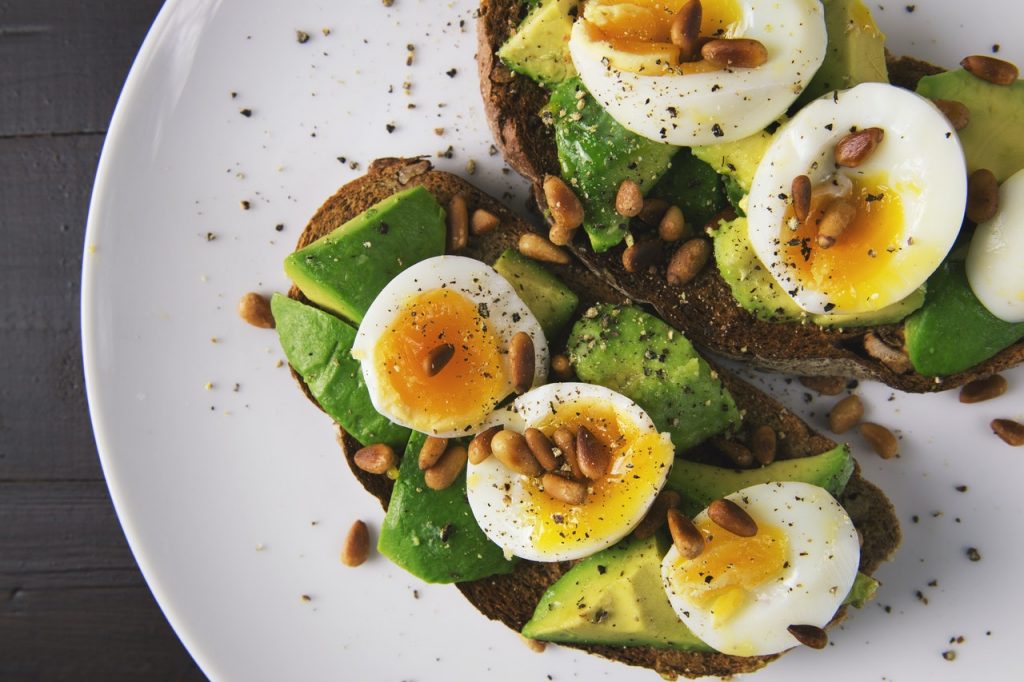Whether you are looking to shed off some extra pounds or start an intense weight-loss journey; running and exercise are a good way to get you moving and healthily lose weight. Aerobic exercises such as running are not only good for weight loss; they promote a healthy lifestyle and have been shown to improve both mental and physical health.
How Does Running Help You Lose Weight?
Running is considered to be among the sports that burn the most calories, which consequently helps with weight loss, in addition to its other health benefits. Harvard Medical Blog lists calories burned by people of different weights in 30 minutes of running at 5mph or 12 minutes per mile, where a 125-pound person burns around 240 calories, a 155-pound person burns approximately 298, and a 185-pound person burns about 355 calories.
How does it burn calories? With each movement, our body needs the energy to fuel itself. The calories we consume from food and beverages are a big part of the complex metabolic processes, which turn carbohydrates into glucose (ATP), and together with oxygen, they fuel our movements.
Running Weight Loss Tips
If you are wondering how to lose weight by running or optimizing its effects, here are some tips that will help you lose weight as you incorporate running into your days.
Running should be enjoyable

Easier said than done, we know. But, if you are planning on maintaining the lost weight, running (or exercise in general) and healthy eating habits should become an enjoyable part of your life, not a temporary solution. Keep in mind that plenty of people start running to lose weight or create healthy habits, but they continue doing it because it becomes something that brings them joy. Running should not feel like a chore; picture it more as a meditative time for yourself during which you work towards your daily goals. In the beginning, you might run for 10 minutes or less, but each day you can seek improvement by gradually increasing your time, distance, and speed.
Plan it out
Many people on the weight loss journey swear by planning activities and keeping track of weight, food, and exercise. You do not need to be a type-A person to plan it out; here are some simple things you can consider so you more or less have a set goal in mind:
Determine your weight goals
You want to lose weight, but how much weight? If you establish a weight goal, it will be easier to know what you’re working towards and see progress gradually.
Make a running plan
If running is going to be a big part of your transformation, then consider making a weekly schedule where you set out your runs. This way, you mentally and physically prepare for what is coming. Through a plan, you set goals as you improve while tracking your progress as well.
Set realistic goals
If you set unrealistic goals, not only will you get discouraged much quicker, but you will be aiming for unsustainable results. The Center for Disease Control and Prevention considers 1 to 2 pounds per week as a sustainable weight loss goal. Similarly, you cannot run a half marathon in a month if you have just started running. Work toward small goals first, as you improve over time.
Modify your eating habits

Running to lose weight goes hand in hand with creating good eating habits. Therefore, if you are looking for sustainable and healthy results, you should consider modifying the type of food you consume and how much you consume. To lose weight, you will need to be in a calorie deficit. That can be either achieved by eating less, burning off more calories than you consume through running, or, ideally, a combination of both.
Restricting the calories, you can consume without exercising can lead to losing muscle along with body fat. If you exercise while in a slight calorie deficit, however, you can preserve more muscle mass and lose fat at the same time.
Calorie deficit
To clarify any confusions you might have about a calorie deficit, here is a simple explanation:
Each person has a set calorie value that they need to consume to maintain their current weight. This can vary depending on certain factors: age, sex, height, body composition, and physical activity levels. To lose weight, you need to consume a smaller number of calories than your maintenance number. This online calculator can help you determine the approximate calorie deficit tailored to your body. Consult with your doctor first if you need further nutritional and medical advice before restricting your calorie intake.
Fueling is important
While you try to cut your calories, it is important not to neglect eating nourishing food to fuel your runs. In order to replenish the body’s glycogen stores, you need carbohydrates, healthy fats, and protein for muscle recovery.
Know your food
People make a common mistake when trying to lose weight and running because they overestimate the number of calories they burn in their runs and reward themselves with a treat that can be two times more caloric than what they burned. This is why keeping an eye on your calorie intake is important, as running alone can appear to increase hunger. Therefore, you should opt for healthy food and be informed on the calorie intake of what you are consuming.
Ease into running

While starting your running and weight loss journey with enthusiasm is always effective, if you are new to running, this enthusiasm can quickly vanish due to high expectations of your performance. It is normal to start slow if you are new to running. If you can’t run as much, start with a brisk walk and start incorporating short intervals of running gradually, depending on your fitness level. With time, you will run for more extended amounts of time and increase your speed.
Take a break in between running days
Whether you are new to running or have been running for some time, taking rest and recovery days is important in both cases. When we rest, we allow our body and muscles to recover and our nervous system to regenerate, so we are stronger on the next run. In your recovery days, you can incorporate short workouts or a quick walk around the block, so you aid your body to recover without doing strenuous activity.
Add variety to your runs
Running at the same length and pace not only can become tedious, but it starts to lose its effectiveness with time as your body adjusts to the energy you need to move your body (hey, that means you’re getting better!). So, variety is key in running and workouts, just as it is in food. For an extra challenge, consider adding the workouts below to your running routine.
Incorporate high-intensity runs

High-intensity runs mean that you will run faster, however, not necessarily for a long time since that requires a lot of energy. Instead, run at a fast pace for 30-60 seconds and then recover for 30-60 seconds. Repeat the sequence for 4-6 reps, and if you feel like you can do more, jog instead of walking in between sets. This was just an example of high-intensity interval training, which you can modify in any way you find appropriate for your fitness level. When you want a bigger challenge, you can try finding a hill and upping the intensity with a hill interval workout.
Try other forms of cardio
Although running is very effective and enjoyable, you can alternate between other cardio forms whenever you feel like switching it up a little. Swimming, cycling, skating, jump rope, even dancing are all forms of cardio that keep you moving and burning calories. They are also a good way to take a little load off your leg muscles and keep your heart rate up.
Don’t skip strength training
For the best results, pairing strength training with running is essential. Strength and resistance training will help you maintain muscle mass that is usually lost during weight loss. As you maintain or gain muscle, your metabolic rate is higher since your muscles store more energy than body fat does. This means that your body can burn calories even at rest, known as the ‘after-burn effect,’ caused due to the increased amount of oxygen your body needs to return to the pre-workout state, which is also the case with high-intensity interval training. Strength training is also crucial to strengthening your muscles to support your joints and better prevent injuries.
These were some of the things to consider as you incorporate running as a workout for weight loss. It can be challenging, but you will grow to love it as you see progress along the way. Just remember to listen to your body and rest when needed.





